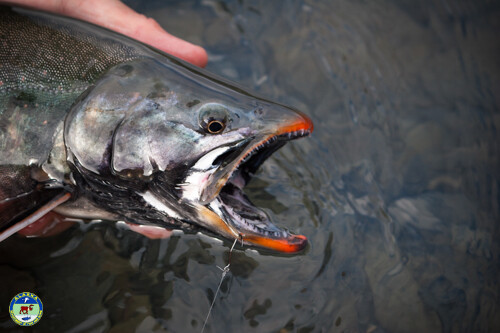The Alaska Department of Fish and Game (ADF&G) announced a series of closures and restrictions to protect king salmon fishing across Cook Inlet. Forecasts predict some of the lowest returns in nearly four decades.
ADF&G published a dozen announcements last Tuesday intending to protect the dwindling king salmon stocks in the region. They stated that both early and late runs in Kenai River king salmon are forecasted to return in historically low numbers, marking the second-worst return in the past 38 years. According to Peninsula Clarion, ADF&G has implemented closures on king salmon fishing in the Kenai River and multiple areas of Cook Inlet. Bait and gear restrictions were also announced for the Kasilof and Ninilchik Rivers. In addition, recreational fishing on the Anchor River and Deep Creek are closed.
Area management biologist Samantha Oslund said in a statement, “King salmon runs in Cook Inlet are anticipated to be especially poor in 2025. Major king salmon fisheries in this area of Cook Inlet have been closed in regulation since 2011.”
Struggling Runs and Escapement Goals
Kenai River kings were designated as a stock of management concern in 2023, leading to an action plan approved by the State Board of Fisheries earlier this year. The goal for the late-run king salmon is a return of 14,250- 30,000 fish longer than 34 inches; however, projections estimate only 8,742 large fish. The early-run forecast is even more dire, with only 1,531 large kings expected, which is well below the escapement goal of 3,900 – 6,600.
King salmon recreational fishing in the Kenai River, including catch-and-release, is closed indefinitely until recovery targets are met. King salmon fishing will be closed from May 1 to June 30 in West Cook Inlet and from May 1 to August 15 for Cook Inlet salt water north of Bluff Point.
Economic Impact & Disaster Declarations
As the ongoing salmon crisis continues to ripple through the commercial fishing industry, recreational closures have historically led to shutdowns of the east side set net fishery. According to Clarion, there has not been an unrestricted season since 2011, and it has been entirely shut down for the past two years. The repeated losses have led to multiple disaster declarations for Upper Cook Inlet salmon fisheries, with state and federal governments recognizing fishery disasters in 2018, 2020, 2021, and 2023. Local governments are now pushing for another declaration for 2024.
While the king salmon numbers remain critically low, ADF&G has projected excellent sockeye salmon runs, with an estimated 3.4 million fish returning to the Kenai River and 1.1 million to the Kailof River, offering potential relief to the region’s fishing communities. The challenges facing Cook Inlet’s king salmon remain a major concern. To learn more, visit the ADF&G website.







